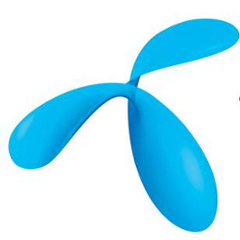nbiot-java
NBIoT-Java provides a Java client for the REST API for Telenor NB-IoT.
Java 8 is required.
Configuration
The configuration file is located at ${HOME}/.telenor-nbiot. The file is a simple list of key/value pairs. Additional values are ignored. Comments must start with a #:
#
# This is the URL of the Telenor NB-IoT REST API. The default value is
# https://api.nbiot.telenor.io and can usually be omitted.
address=https://api.nbiot.telenor.io
#
# This is the API token. Create new token by logging in to the Telenor NB-IoT
# front-end at https://nbiot.engineering and create a new token there.
token=<your api token goes here>
The configuration file settings can be overridden by setting the environment variables TELENOR_NBIOT_ADDRESS and TELENOR_NBIOT_TOKEN. If you only use environment variables the configuration file can be ignored. Finally, there is a Client constructor that accepts the address and token directly.
How do I use it?
Just include the following in your pom.xml:
<dependency>
<groupId>engineering.exploratory</groupId>
<artifactId>nbiot-java</artifactId>
<version>0.2.0</version>
</dependency>
Updating resources
The various Client.update* methods work via HTTP PATCH, which means they will only modify or set fields, not delete them. There are special Client.delete*Tag methods for deleting tags.
Sample code
Below you will find some examples on how to use the client.
Fetching data
Collection with default params
Client client = new Client();
OutputDataMessage[] data = client.data("<YOUR_COLLECTION_ID>");
Collection with custom params
Client client = new Client();
OutputDataMessage[] data = client.data("<YOUR_COLLECTION_ID>", new ImmutableDataSearchParameters.Builder()
.limit(500)
.until(Instant.now())
.build()
);
Device with default params
Client client = new Client();
OutputDataMessage[] data = client.data("<YOUR_COLLECTION_ID>", "<YOUR_DEVICE_ID>");
Device with custom params
Client client = new Client();
OutputDataMessage[] data = client.data("<YOUR_COLLECTION_ID>", "<YOUR_DEVICE_ID>", new ImmutableDataSearchParameters.Builder()
.limit(500)
.until(Instant.now())
.build()
);
Setting up a data stream through the client
Client client = new Client();
client.outputStream("<YOUR_COLLECTION_ID>", handler -> {
handler.onConnect((session -> logger.info("Handler connect")));
handler.onError(((session, error) -> logger.warning("Handler error")));
handler.onClose((code, reason) -> logger.info("Handler close"));
handler.onMessage((message) -> {
logger.info("Handler message");
logger.info(message.toString());
});
});
Development
Testing
Run mvn test to run the tests.
Dependencies
Run mvn versions:display-plugin-updates to check if any plugins have newer versions available.
Run mvn versions:display-dependency-updates to check if any dependencies have newer versions available.
Deployment
In order to release our components to the Central Repository, we deploy them to OSSRH.
Our OSSRH credentials and GPG key can be found in AWS Systems Manager Parameter Store. Import the GPG key into your keyring.
Make sure your $HOME/.m2/settings.xml file contains the following, with OSSRH password and gpg.passphrase inserted:
<settings>
<servers>
<server>
<id>ossrh</id>
<username>Exploratory Engineering</username>
<password></password>
</server>
</servers>
<profiles>
<profile>
<id>ossrh</id>
<activation>
<activeByDefault>true</activeByDefault>
</activation>
<properties>
<gpg.executable>gpg</gpg.executable>
<gpg.passphrase></gpg.passphrase>
</properties>
</profile>
</profiles>
</settings>
Finally, run this command to deploy to OSSRH. It will automatically be released to the Central Repository.
GPG_TTY=$(tty) mvn clean deploy -P release
For more information see:
